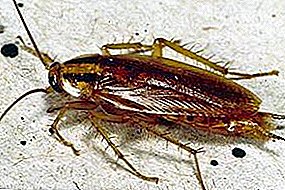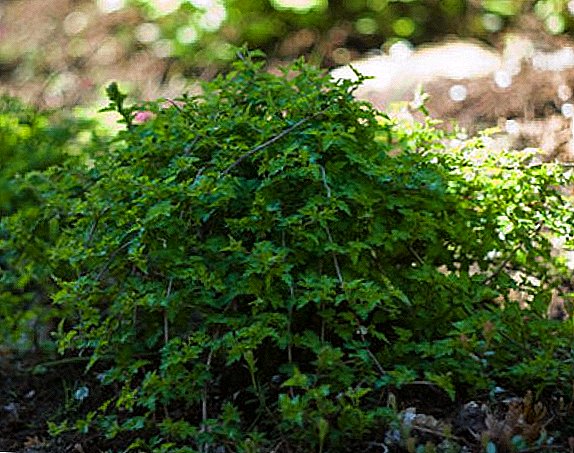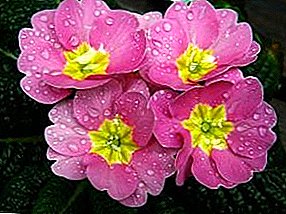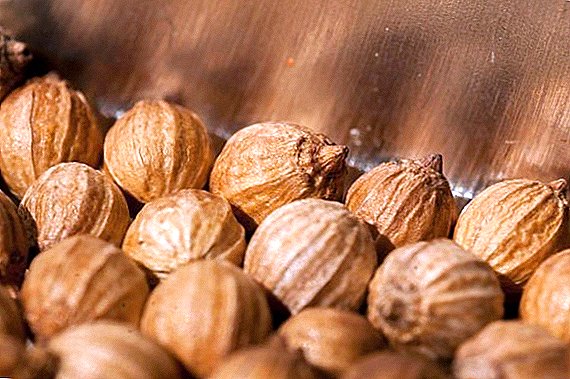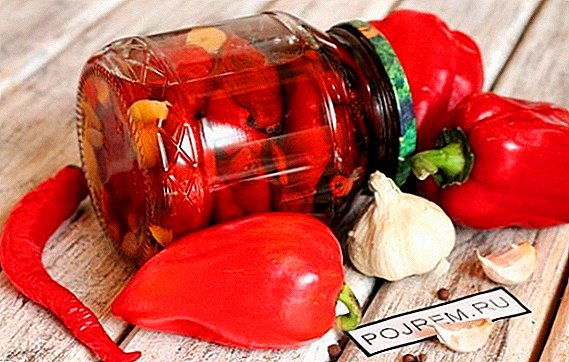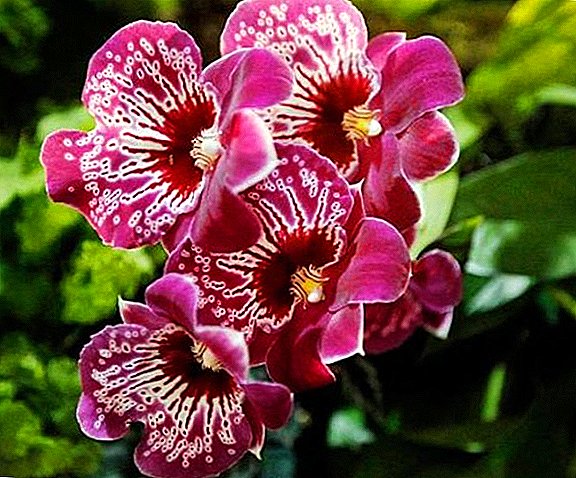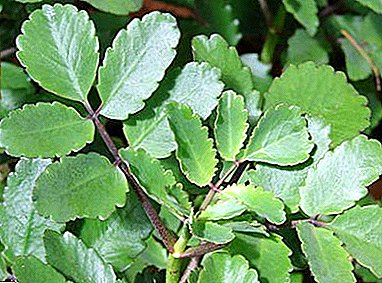
Kalanchoe Cirrus (Lat. Kalancho epinnata) popularly has the name "home doctor".
Also known by another name - Cup bryophyllum. It is quite often found on the windowsills and has not only aesthetic beauty, but also has healing properties.
In nature, there are more than 200 species of Kalanchoe. And only Kalanchoe Cirrus has the most useful properties.
Him the juice used for healing wounds, burns, for cosmetic purposes, in the manufacture of ointments.
The article below describes the view. Kalanchoe Cirrus: healing properties of plants and photos.
Description of the species
Kalanchoe Cirrus - perennial evergreen. It grows to a height of 1.5 m. It has a hollow stem, at the base, grows, in the process of growth. The leaves are pinnate, dark green, 5-20 cm long, 3-12 cm wide.
 Along the edges of the leaf, between the teeth, a large number of brood buds are formed. In the future of them develop "kids."
Along the edges of the leaf, between the teeth, a large number of brood buds are formed. In the future of them develop "kids."
These are very small plants with two pairs of leaflets and tiny root processes. When the plant is swaying, these “babies” fall into the ground and take root. That is why this species is also called "viviparous".
Kalanchoe during flowering, it releases an arrow on which a white-pink color is gathered by a whisk. They are hanging, tubular and rather large, up to 4 cm.
The fruits ripen in a small box, reaching a length of 13-15 mm. They have an oval shape, reach a length of 0.9-1.0 mm, and a width of about 0.3 mm.
Kalanchoe Cirrus - an unpretentious plant and with care in the home does not require special conditions.
A photo
Kalanchoe Cirrus photo:



Care
Temperature
He is quite thermophilic and calmly tolerates heat. But the optimum temperature in the summer months is still 20-24 degrees.
In winter, it is desirable to provide a temperature of 16-20 degrees. Do not allow a drop below 10 degrees. A flower can get sick, leading to its death.
Watering
Watering should be done regularly. small doses. The greatest amount of moisture should receive in the spring and summer months.
During this period, Kalanchoe begins enhanced growth. Cool irrigated water is suitable for irrigation. In the winter months, moderate water is produced with warm water.
With an excess of moisture will begin to rot the root system.
The ideal frequency of watering is considered every 3-4 days. It is necessary to monitor the top layer of soil, watering is mandatory when it dries.
Kalanchoe leaves fleshy and they contain a large supply of liquid, so that it is easy to tolerate a lack of moisture.
The soil
 For planting, you can use the land purchased in a specialty store.
For planting, you can use the land purchased in a specialty store.
At home for the preparation of earthen mixture you need to take leaf ground, humus and coarse sand in the same proportions.
A small amount of finely crushed birch charcoal and brick chips are added to the soil.
Light mode
Kalanchoe loves the sun In the morning summer hours, the flower can safely be in the sun.
After lunch, you need to cover the window on which the plant stands, to shade. Otherwise burns on the leaves from burning sun rays. In winter, the plant can not pritenyat.
Air humidity
The plant does not need air moistening.
At increased humidity, additional moisture accumulates in the stem, which can cause fungal infections of the stem.
During the winter months, low air humidity is ensured.
Fertilizers
Kalanchoe fertilized 1 time in 1.5-2 months, this is quite enough for good growth.
Used for feeding fertilizer for cacti. In winter, fertilize in any case impossible. The fertilizer dissolves in water and is applied to the soil during irrigation.
Transfer
Since the pure peat land used in shipping pots is not suitable as permanent soil.
Kalanchoe grows quite quickly, the root system is well developed. And so in the spring you need to transplant the plant.
Pot for planting should be deep and wide. A layer of expanded clay is laid at the bottom for better visibility of excess moisture.
The new pot is transplanted neatly, the root system should not be damaged, the transfer method is used. You can not replant a flowering plant.
How to care for other types of Kalanchoe: Bossfeld, Rosalin, Mangina.
Pruning
Kalanchoe is clipped to give it a beautiful shape. You can also cut the peduncle. This is done to give strength to the plant.
Young and strong shoots are cut and are used for breeding. The tip is trimmed to form side shoots.
Breeding
Kalanchoe Cirrus breeds in several ways. - "kids", seeds and cuttings.  Growing on the leaves "kids"
Growing on the leaves "kids"
Then the already grown up and rooted small plant is transplanted into a separate pot with fertilized soil.
Often new plant grows from fallen leaf. Having fallen on wet soil, he lets out roots and takes roots.
Seeds sown from late February to early May. To do this, use a ground for succulents or cooked with his own hands. Seeds are distributed
Optimum temperature for seed germination is considered 21-23 degrees. After the first shoots are shown out of the ground, the film is removed. Usually, seed growth occurs in 30-37 days.
After the appearance of 4-5 leaves, a young flower can be transplanted into a permanent pot. After planting the pot is placed for 7-10 days in a dark place.
This is necessary for better rooting. Then put the pot on the windowsill.
Medicinal properties
Kalanchoe Cirrus healing properties. Kalanchoe juice has healing properties.
It cleans sores and wounds, accelerates their healing, has hemostatic properties. It is successfully applied in cosmetology, surgery, gynecology, ophthalmology.
In the leaves contains about 95% moisture. Due to the unique combination of chemical components Kalanchoe juice and has healing properties.
The juice contains: acids (malic, citric, oxalic), polysaccharides and tannins.
As well as vitamins C and P, mineral salts, flavonoids (geline, quercetin, kaempferol), macro and microelements.
Flavonoids excrete toxic and radioactive substances from the body, have a choleretic effect.
Tannins have hemostatic and anti-inflammatory properties. Vitamin C strengthens the immune system, and vitamin P makes the walls of blood vessels strong and elastic.
Juice does not contain toxic substances, and therefore does not irritate the skin and mucous membrane. He has no contraindications except for individual intolerance.
Diseases and pests
Ways to treat diseases
When excess moisture occurs, the root system decays, and the stem is affected by a fungus.
 The leaves turn yellow, wither and soon fall. Requires a transplant plants in the new pot.
The leaves turn yellow, wither and soon fall. Requires a transplant plants in the new pot.
In this case, all affected areas of the root system are cut off and treated with charcoal. If the stem is severely impaired, it is worth cutting it and rooting it.
Plant growth retardation is the lack of nutrients. It is necessary to transplant the plant into fertilized soil.
Nutrient Surplus may lead to cessation of flowering. It is necessary to completely stop fertilizing the soil.
In case of insufficient lighting, yellowing and wilting of the leaves, stretching of the stem occurs. The plant is exposed on the window sill.
Pest control methods
Kalanchoe Medical Pierced may be affected by a mealybug, flap, or aphids. With the defeat of the mealybug, a white mealy plaque appears on the leaves. Process the plant with a soap or soap-alcohol solution.
With the appearance of scythes gray specks appear on the foliage, fungus develops. To remove the pest, the plant is treated with soapy water.
With yellowing foliage and detected from the bottom of the leaf aphid, you need to process the flower with soap or potassium solution.
In case of abundant damage by any of the pests, treatment with chemicals is carried out.
Kalanchoe Cirrus very easy to maintain and has healing properties. He is the first assistant for the beginning cold, helps to heal wounds and is simply an amazing decoration of the house.



